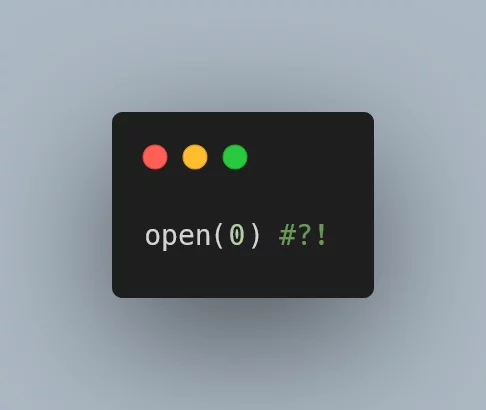Today I learned you can read from stdin with open(0).

Opening a file
In Python, we typically use the function open to open a file and read from it.
In particular, the construct
with open(filepath, mode) as f:
...is very common in Python.
Well, today I learned that the function open can accept the integer 0 to read from standard input.
That's because the function open accepts file descriptors as its argument,
and 0 is the file descriptor for standard input.
1 is the file descriptor for standard output,
and 2 is the file descriptor for standard error,
so you can also write to these two streams by using the built-in open:
>>> stdout.write("Hello, world!\n")
Hello, world!
14
>>> stdout.close()Knowing that you can read from stdin with open(0), you can type in multiline input in the REPL with ease:
>>> msg = open(0).read()
Hello,
world!
^Z
>>> msg
'Hello,\nworld!\n'To stop reading, you need to go to an empty new line and press some magic key(s). (On Windows, it's Ctrl+Z. On Linux/Mac OS it may be Ctrl+D, not sure.)
That's it for now! Stay tuned and I'll see you around!
Become a better Python 🐍 developer 🚀
+35 chapters. +400 pages. Hundreds of examples. Over 30,000 readers!
My book “Pydon'ts” teaches you how to write elegant, expressive, and Pythonic code, to help you become a better developer. >>> Download it here 🐍🚀.
